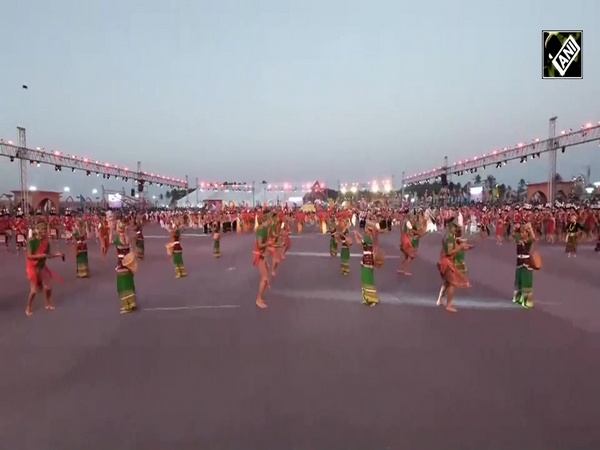China's aggressive expansion of territorial claims may provoke future clash with US
Jun 27, 2020

Washington DC [USA], June 27 : China may be pressing its territorial claims aggressively from the Himalayas to the South China Sea, raising possibilities of additional deadly clashes with the United States in the near future.
At a time when the world has been grappling with the coronavirus pandemic, China's military encroached upon its neighbours' territories on several fronts throughout the spring and now into summer, Beijing is flexing its military might in ways that have raised alarms across Asia and in Washington, The New York Times stated in a report.
For instance, China, in the same week of an escalating brawl with the Indian soldiers in Eastern Ladakh, sent one of its submarines into the waters near Japan. Chinese fighter jets and at least one bomber buzzed Taiwan's territorial airspace almost daily.
China's military assertiveness reflects a growing sense of confidence and capability, but also one of confrontation, particularly with the United States over the pandemic, the fate of Hong Kong and other issues that Beijing considers central to its sovereignty and national pride, the Times reported.
Beijing claims that all of its recent operations are defensive, but each of them increases the risk of a military clash, whether intended or not. That appears to be what happened on the night of June 15, when Chinese and Indian soldiers fought along the Line of Actual Control (LAC).
In addition to the above developments, China's military is widely thought to remain far behind American armed forces, but it has caught up in some areas, including the expansion of its naval power and the deployment of anti-ship and antiaircraft missiles.
By the end of last year, China was believed to have at least 335 warships, more than the United States, which has 285, according to the Washington-based Congressional Research Service report cited by the Times.
The report said that China now possesses "a major challenge to the US Navy's ability to achieve and maintain wartime control of blue-water ocean areas in the Western Pacific -- the first such challenge the US Navy has faced since the end of the Cold War."
Not just stepping up its military activity near Taiwan, Beijing has also expanded its claims to the South China Sea, creating two new administrative districts to govern the islands it controls in the Paracel and Spratly chains and menacing other neighbours.
While the tensions with India are important, with details of the incident remaining sketchy and impossible to verify independently, they are not the core Chinese military priority -- confronting what it considers American aggression in China's neighbourhood, the Times said in the report.
To counter China, the United States, too, has stepped up its military activity in the region. It has sent American warships through the South China Sea and stepped up support for Taiwan and its military -- issues that came up this month when Secretary of State Michael Pompeo met China's top diplomat, Yang Jiechi, in Hawaii.
The Chinese blame the United States for the tensions in the region, accusing the American military of routinely interfering in a region where it has no territorial claims.
Zhu Feng, executive director of the China Centre for Collaborative Studies of the South China Sea, who also contributed to the report on American military activity there, warned that the possibility of confrontation would increase as the US presidential campaign heated up.
"The United States has pinned China down with the two talons of the South China Sea and Taiwan issues," he said.


















